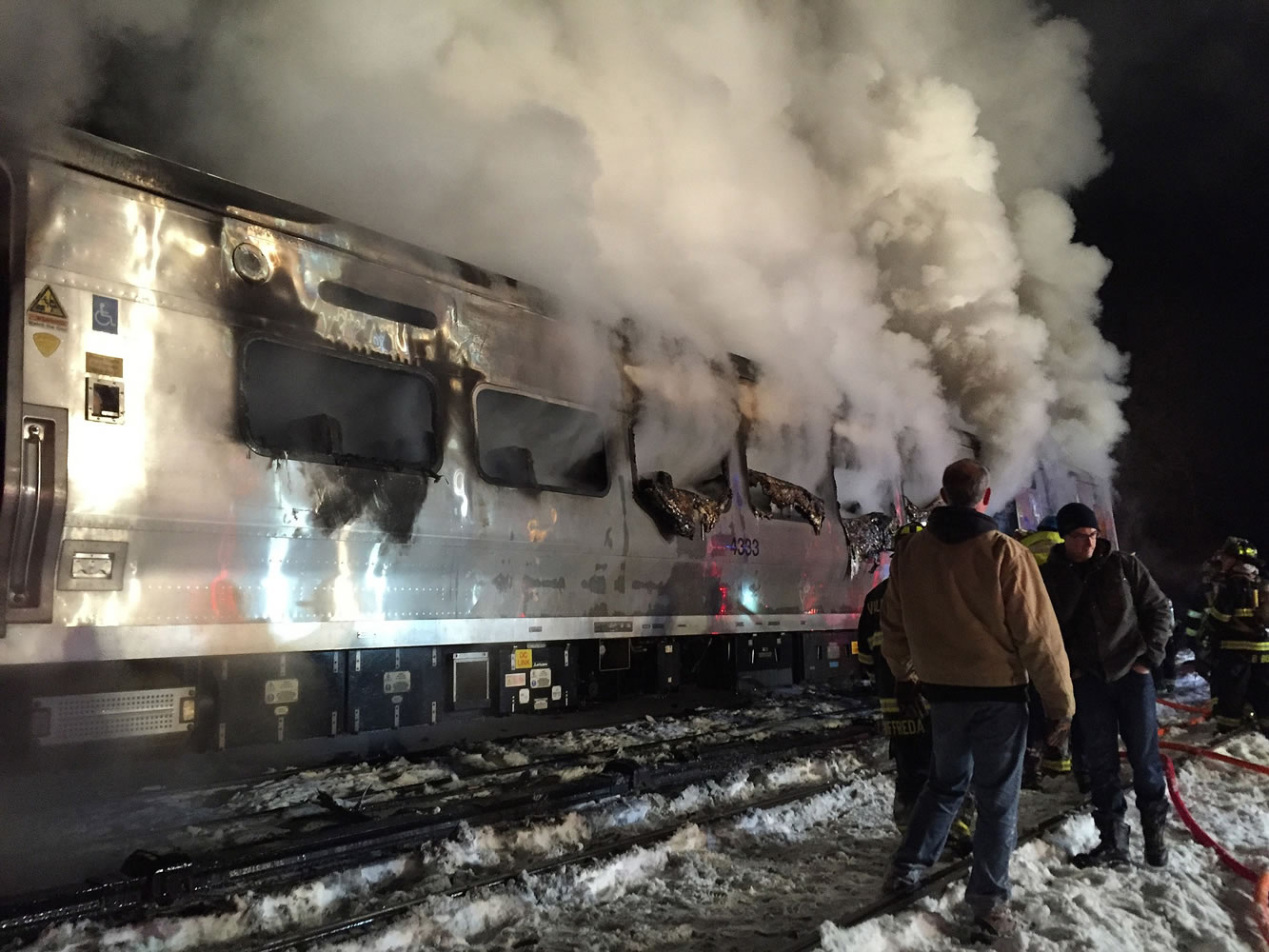VALHALLA, N.Y. — A packed commuter train slammed into a sport utility vehicle on the tracks at a crossing on Tuesday night, killing seven people, injuring several others and sending hundreds of passengers scrambling to get to safety as the front of the train and the SUV burst into flames. The impact was so forceful the electrified third rail buckled and pierced the train, authorities said.
“You have seven people who started out today to go about their business and aren’t going to be making it home tonight,” Gov. Andrew Cuomo said at the crash site in Valhalla, 20 miles north of New York City.
The northbound Metro-North Railroad train left Grand Central Terminal in Manhattan around 5:45 p.m. and struck the Jeep Cherokee about 45 minutes later. Cuomo said the SUV’s driver and six people aboard the train were killed, making this crash the railroad’s deadliest.
The railroad crossing gates had come down on top of the SUV, which was stopped on the tracks, Metropolitan Transportation Authority spokesman Aaron Donovan said. The driver got out to look at the rear of the vehicle, then she got back in and drove forward and was struck, he said.
The train shoved the SUV about 10 train car lengths. Smoke poured out of the scorched front rail car, its windows blackened.
“This is a truly ugly and brutal site,” Cuomo said.
Witnesses said they saw the flames shooting from where the crash occurred, in a wooded area near a cemetery.
Ryan Cottrell, assistant director at a nearby rock climbing gym, said he had been looking out a window because of an earlier, unrelated car accident and saw the train hit the car, pushing it along.
“The flames erupted pretty quickly,” he said.
Passengers described a bump and said they smelled gasoline from the vehicle.
Around 650 passengers likely were aboard the train, including Justin Kaback, commuting home to Danbury, Connecticut.
“I was trapped. You know there was people in front of me and behind me, and I was trapped in the middle of a car and it was getting very hot,” he told ABC News. “All the air was turned off so there was no circulation so it was definitely scary especially when people are walking by on the outside and they said, ‘The train’s on fire. There’s a fire.”‘
Passenger Stacey Eisner, who was at the rear of the train, told NBC News that she felt the train “jerk” and then a conductor walked through the train explaining what had happened. She said her train car was evacuated about 10 minutes later using ladders to get people out.
The other rail passengers were moved to the rear of the train so they could get off. About 400 of them were taken to the rock climbing gym for shelter. Buses were heading there to pick them up and take them to their destinations.
The train sat on the tracks at the crossing with thick smoke billowing from it.
All railroad grade crossings have gate arms that are designed to lift automatically if they strike something like a car on the way down, railroad safety consultant Grady Cothen said. The arms are made of wood and are designed to be easily broken if a car trapped between them moves forward or backward, he said.
Metro-North is the nation’s second-busiest railroad, after the Long Island Rail Road. It was formed in 1983 and serves about 280,000 riders a day in New York and Connecticut. Service on its Harlem Line was suspended between Pleasantville and North White Plains after the crash.
Metro-North has been criticized severely for accidents over the last couple of years. Late last year, the National Transportation Safety Board issued rulings on five accidents that occurred in New York and Connecticut in 2013 and 2014, repeatedly finding fault with the railroad while also noting that conditions have improved.
Among the accidents was a Dec. 1, 2013, derailment that killed four people, the railroad’s first passenger fatalities, in the Bronx. The NTSB said the engineer had fallen asleep at the controls because he had a severe, undiagnosed case of sleep apnea.
Last March, the Federal Railroad Administration issued a stinging report on Metro-North, saying the railroad let safety concerns slip while pushing to keep trains on time. Railroad executives pledged to make safety their top priority.



